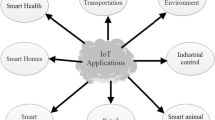Abstract
Network Address Translation (NAT) is the major solution to ease the IP address shortage problem and support the upcoming demands of huge IP address from the Machine-to-Machine communications and Internet of Things . However, NAT breaks the peer-to-peer communications and blocks the Internet-oriented requests. In order to resolve the problems, lots of NAT traversal solutions such as Session Traversal Utilities for NAT, Universal Plug-and-Play, Traversal Using Relay NAT, Application-Layer Gateway (ALG) and Interactive Connectivity Establishment have been proposed. Among the NAT traversal solutions, the 3rd Generation Partnership Project adopts the ALG solution for SIP/IMS multimedia services in the mobile networks. The ALG solution does not require modifications to the clients (e.g., User Equipments). However, the ALG solution utilizes the Real-time Transport Protocol (RTP) proxy to translate the RTP packets, and thus this solution produces extra delay and packet loss possibility to the RTP packets. In this paper, we integrate Software-defined networking (SDN) to the All-IP mobile networks and propose a solution to improve the ALG solution in the SDN-enabled All-IP mobile networks. We derive the analytic models for analyzing the ALG solution and the proposed solution, and compare these two solutions in terms of the throughput, loss rate and delay.










Similar content being viewed by others
References
Pelagie, H., & Ernesto, D. (2011, October). Overcoming NAT traversal issue for SIP-based communication in P2P networks. In Wireless and Mobile Networking Conference (WMNC), pp. 1–8.
Chen, W.-E., Huang, Y.-L., & Chao, H.-C. (2008). NAT traversing solutions for SIP applications. EURASIP Journal on Wireless Communications and Networking, 2008, 1–10.
Wacker, A., Schiele, G., Holzapfel, S., & Weis, T. (2008). A NAT traversal mechanism for peer-to-peer networks. Peer-to-Peer Computing, 2008, 81–83.
Rosenberg, J., Mahy, R., Matthews, P., & Wing, D. (2008, October). Session Traversal Utilities for NAT(STUN). RFC 5389.
Boucadair, M., Penno, R., & Wing, D. (2013, July). Universal Plug and Play (UPnP) Internet Gateway Device, Internet Engineering Task Force, RFC 6970.
Rosenberg, J., Mahy, R., Matthews, P., & Wing, D. (2010, April). Traversal Using Relays around NAT (TURN): Relay extensions to Session Traversal Utilities for NAT (STUN), RFC 5766.
Beijnum, I. V. (2011, October). An FTP Application Layer Gateway (ALG) for IPv6-to-IPv4 Translation. Internet Engineering Task Force, RFC 6384.
Rosenberg, J. (2010, April). Interactive Connectivity Establishment (ICE): A Protocol for Network Address Translator (NAT) Traversal for Offer/Answer Protocols. RFC 5245.
Kimoon, B., & Kyuseob C. (2010). The problems and their solutions when using SIP in NAT environment. In 2010 5th international conference on computer sciences and convergence information technology (ICCIT), pp. 997–1000.
Muller, A., Carle, G., & Klenk, A. (2008). Behavior and classification of NAT devices and implications for NAT traversal. Network IEEE, 22(5), 14–19.
Third Generation Partnership Project (3GPP) . (2014). Technical specication group services and system aspects. IP Multimedia Subsystem (IMS), Technical Specication (TS) 23.228 version 13.1.0, December 17.
Third Generation Partnership Project (3GPP). (2015). Technical specication group services and system aspects. IMS Application Level Gateway (IMS-ALG)—IMS Access Gateway (IMS-AGW) interface, Technical Specication (TS) 23.334 version 12.6.0, January 6.
Lin, Y.-D., & Tseng, C.-C. (2010). How NAT-compatible are VoIP applications? Communications Magazine IEEE, 48(12), 58–65.
Tranoris, C., Denazis, S., Mouratidis, N., Dowling, P., & Tynan, J. (2013). Integrating OpenFlow in IMS Networks and Enabling for Future Internet Researchand Experimentation. Lecture Notes in Computer Science, 7858, 77–88.
Basta, A., Kellerer, W., Hoffmann, M., Hoffmann, K., & Schmidt, E.-D. (2013, November) A virtual SDN-enabled LTE EPC architecture: A case study for S-/P-gateways functions, future networks and services (SDN4FNS), 2013 IEEE SDN for, pp. 1–7.
OpenFlow Switch Specification version 14.0.0 Open Network Foundation (2013, October 14) https://www.opennetworking.org/images/stories/downloads/sdn-resources/onf-specifications/openflow/openflow-spec-v1.4.0.
Artalejo, J. R., & Lopez-Herrero, M. J. (2001). Analysis of the busy period for the M/M/c queue: An algorithmic approach. Applied Probability, 38, 209–222.
Gautam, N. (2012). Analysis of queues: Methods and applications. Taylor & Francis Group: CRC Press.
Omahen, K., & Marathe, V. (1978). Analysis and applications of the delay cycle for the M/M/c queueing system. JACM, 25(2), 283–303.
Acknowledgments
This study is conducted under the “Mobile Core Network and Internetworking Technologies in Next Generation Network” of the Institute for Information Industry which is subsidized by the Ministry of Economy Affairs of the Republic of China, and also supported by the Ministry of Technology, Taiwan, under Grant Numbers 101-2221-E-197-001-MY2 and 103-2221-E-197-004.
Author information
Authors and Affiliations
Corresponding author
Rights and permissions
About this article
Cite this article
Chen, WE., Chen, BE. An Effective NAT Traversal Mechanism for SIP/IMS Services in SDN-Enabled All-IP Mobile Networks. Wireless Pers Commun 84, 2171–2185 (2015). https://doi.org/10.1007/s11277-015-2549-1
Published:
Issue Date:
DOI: https://doi.org/10.1007/s11277-015-2549-1




